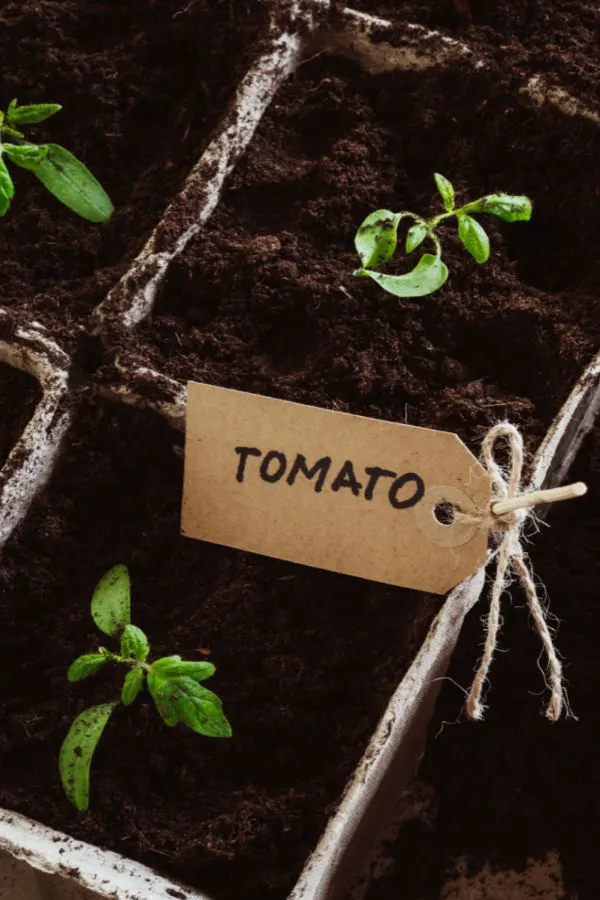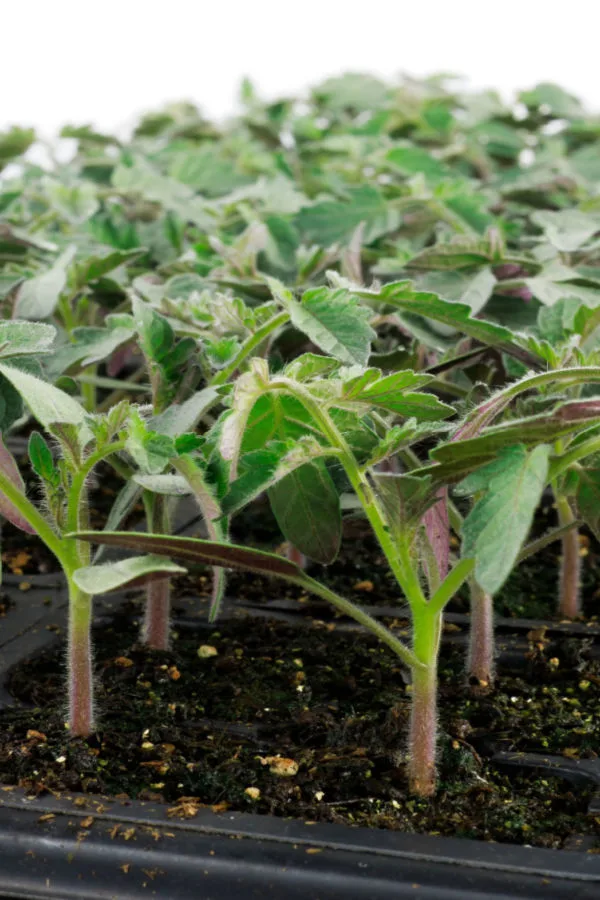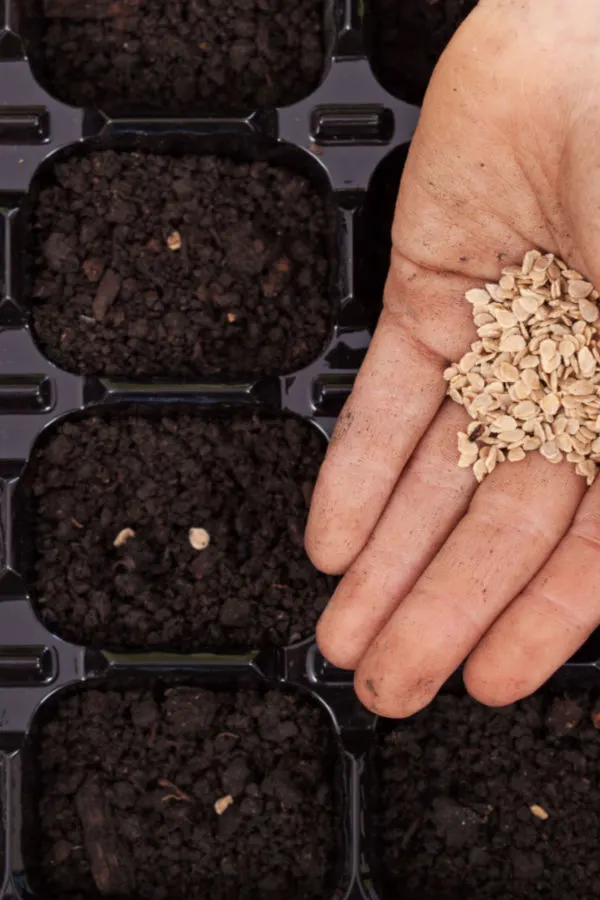If there is one thing that many gardeners struggle with in late winter, it is knowing when to pick the best time to start their vegetable or flower seeds indoors.
Picking the right time can certainly be a challenge. Especially when you consider the consequences of starting seeds indoors too early or too late. Start them too early, and you end up trying to maintain monstrous plants that are hard to control. But start them too late and you end up with plants that are lucky to ever grow and produce.
Of the two issues, starting seeds too late can create the more serious of issues. Plants that are small and weak have a hard time adjusting to life outdoors. Not only are they more susceptible to damage from wind, storms and quick temperature changes, they are also easy prey for insects and disease.

In addition, with their less than mature roots, they have difficulty establishing into the large space of a garden or raised bed. Because of that, they can quickly dry out and wilt when conditions are dry or windy. They can also just as easily succumb to rot if the soil becomes saturated from heavy spring rains.
The Pitfalls Of Starting Seeds Too Early…
Unfortunately, starting seeds too early indoors has a few pitfalls as well. With too much time to grow, seedlings often outgrow their container before it’s time for outdoor planting. That can result in having to re-transplant them a second time. Not only is it time consuming, it can stunt early growth.
Last but not least, overly large transplants can struggle to take hold in the soil. Overgrown plants often go through a long shock period before they start to grow again after transplanting. They are also often too top heavy with foliage and struggle to stay upright and strong without support.
So how can you plant at just the right time to avoid these issues? The good news is that figuring out the best time is actually quite easy – and that is exactly what today’s article is all about!
How To Know When To Start Your Vegetable Seeds Indoors
Knowing when to start your vegetable and flower seeds inside begins with knowing when your specific crops will need to be planted outdoors. From there, it’s all about learning to count backwards!

The first key date to be aware of is your specific area’s average last frost date. A frost date is the average date of the last light frost / freeze that normally occurs in your area each spring. It’s important to realize this is not an exact science nor does it mean a frost or even a freeze can’t occur after this date.
But what knowing this date does do is give you a target date for planting outdoors. Once you know your average last frost date, you can then know that by adding two to three weeks to the date, you can be relatively safe to plant outdoors. Again, not a guarantee – but it gives you the best possible date to time up indoor seed planting.
Frost dates are published by a variety of on-line resources and are quite easy to find. In addition, most seed companies have them posted on-line as well. Local extension offices are also a great resource for specific frost dates as well. See: Farmer’s Almanac Average Frost Date Search
Counting Backwards From Planting Date – When To Start Vegetable Seeds Indoors
Once you know your last frost date, by adding a few weeks to it, you can come up with your potential “safe” planting date. As an example, if your area’s last frost date is May 3rd, you would add two to three weeks to come up with a potential planting day of May 17th to May 24th.

Once you have that potential planting day time-frame, the next step is to find out how long it takes the specific plants you will be growing to germinate and grow to transplantable size.
That information can be found right on the back of nearly all seed packets. And if you don’t happen to have the original seed packet, you can also head to most seed company’s websites to find the information as well.
In general, most plant varieties require an average of six to eight weeks to germinate and grow to transplantable size. Some will take longer, and others a bit shorter. For instance, hot peppers can take 2 full weeks just to germinate. For peppers, you may need to start them 8 to 10 weeks before planting day.
Meanwhile, cucumbers and zucchini germinate and grow quickly, and may only need 4 to 5 weeks. Whatever the specific variety recommendation, once you know the length of growing time needed, you can simply count backwards from your planting date to plant your seeds accordingly.
The Count Back Method Example – When To Start Vegetable Seeds Indoors
To walk you through the count back method, we will use one of the more common vegetables that gardeners start from seed indoors – tomatoes. For this example, we will set June 1st as the target planting date.

Tomatoes on average require 6 weeks of growth. Tomatoes usually germinate about seven days (on average) after planting. Using the count back method, we will start by counting back 6 weeks. In addition, we will add one extra week to allow time for the seed to germinate as well.
That means you will need to count back 7 weeks from June 1st to find your seed planting date. For this example, that means you should start your seeds indoors on April 13th. This will give plenty of time to have strong, outdoor-ready plants that are just the right size.
Just Keep Counting Backwards!
You can use this count back process for nearly every annual vegetable and flower plant you start from seed! It’s a simple but effective method for always having your plants ready to go come planting time. It also allows plenty of time to get plants hardened off before planting day. See : Why You Need To Harden Off Seedlings – And How To Do It!
It’s important to note that growing times and rates can be effected by additional factors. Using good seed starting soil, giving your plants adequate lighting and warmth, and watering them properly as they grow can all impact the size and health of transplants.
One thing you want to do early is order those seeds! That will ensure you have the seeds you need on hand and ready to go come planting time. Affiliate Seed Link : Eden Brothers Seed Co.
Here is to starting your seedlings at the perfect time this year, and to your best garden season ever!
Follow Our Facebook Page For Great Gardening Tips And Advice! This Is My Garden Facebook Page
This Is My Garden is a garden website created by gardeners, for gardeners. Jim and Mary Competti have been writing gardening, DIY and recipe articles and books and speaking for over 15 years from their 46 acre Ohio farm. They publish three articles every week, 52 weeks a year. Sign up today to follow via email, or follow along!
